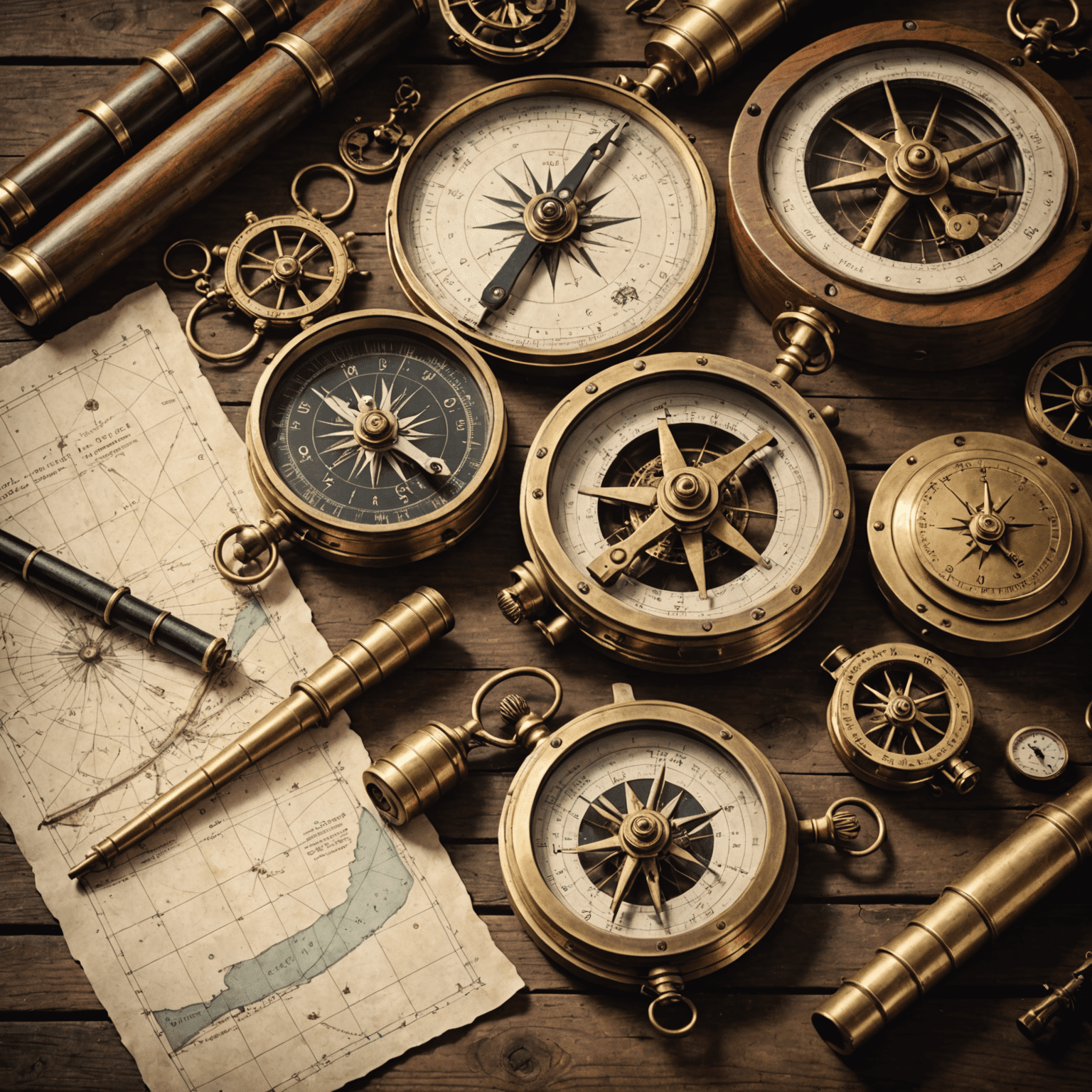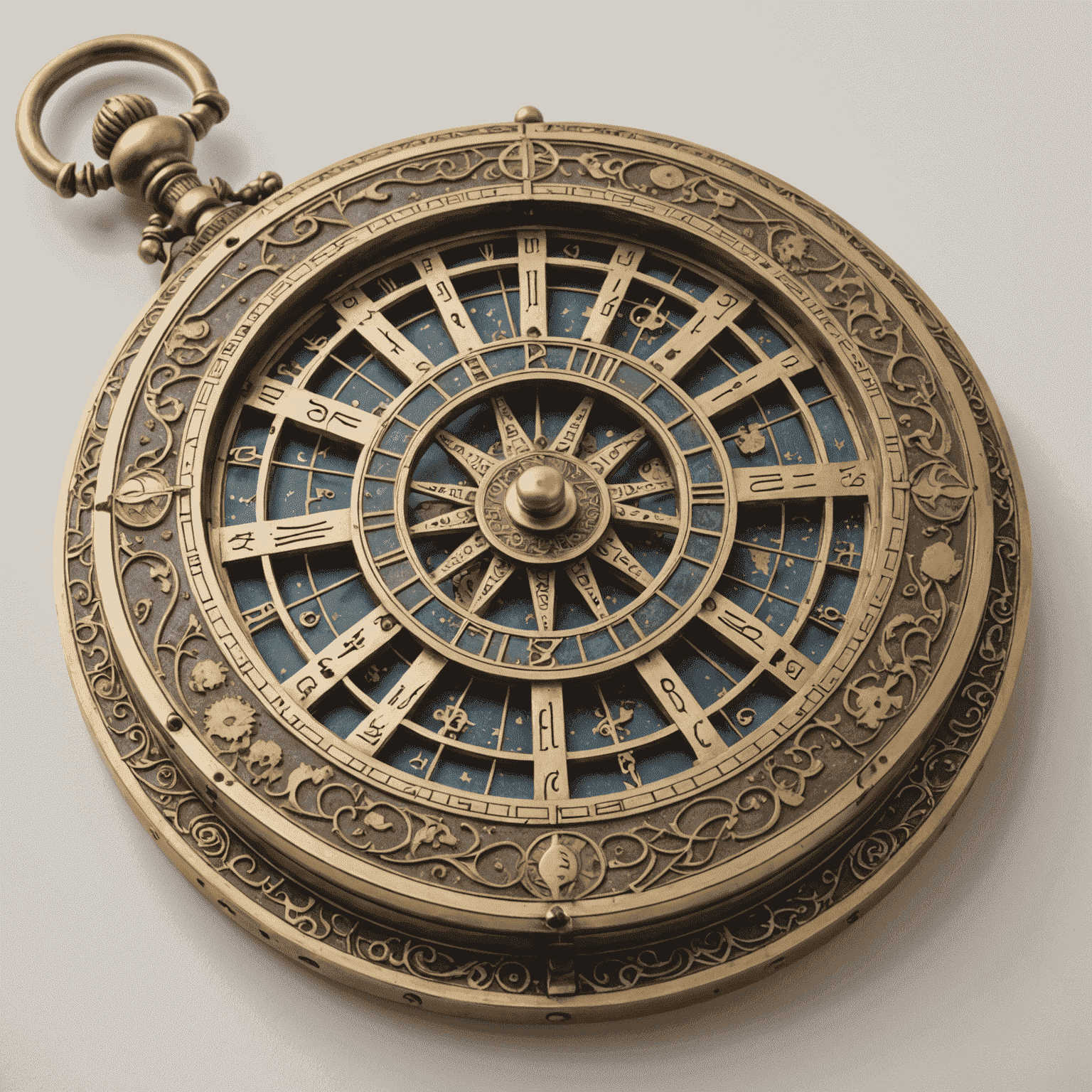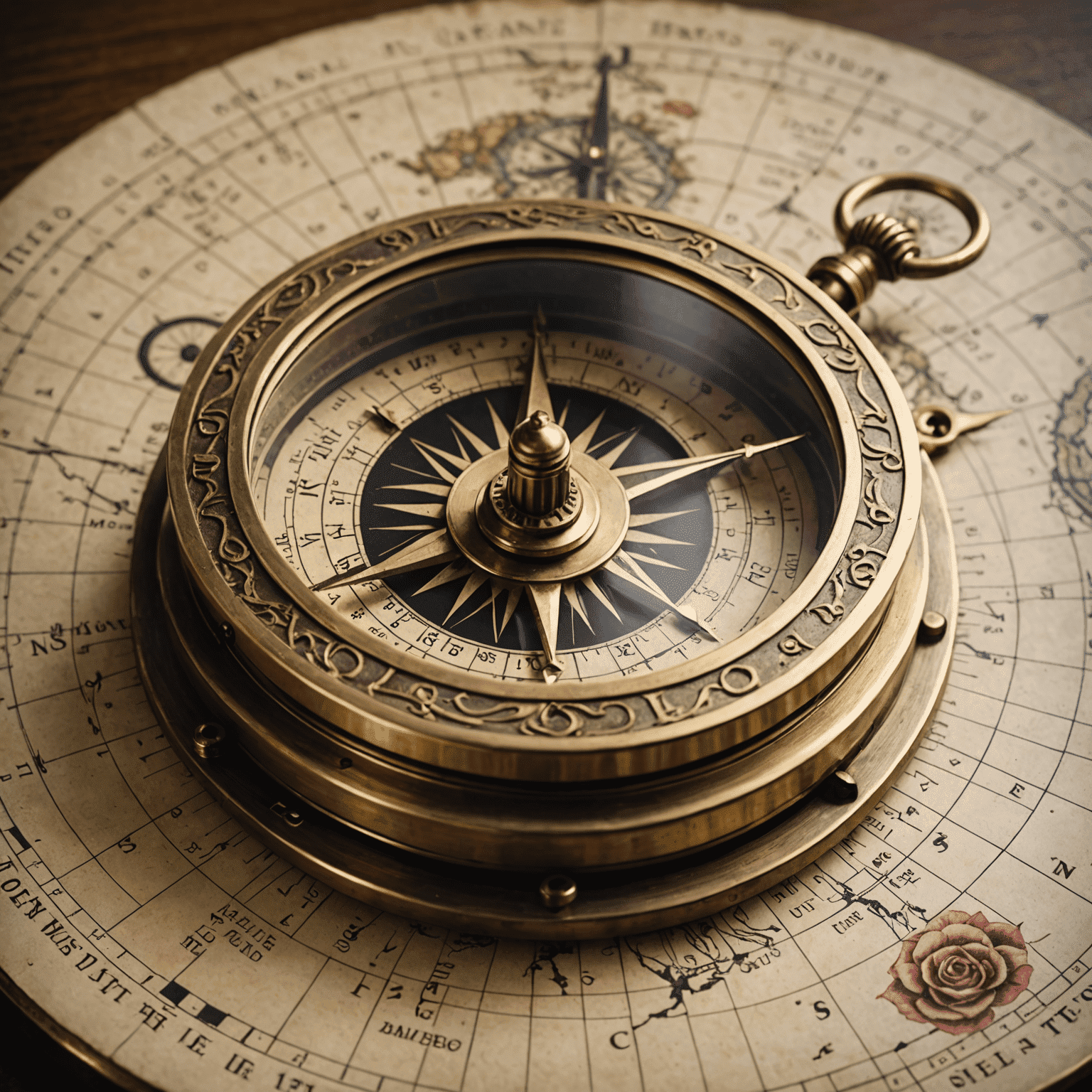Nautical Instruments: Beauty in Function

Throughout maritime history, navigators have relied on an array of ingenious instruments to guide their vessels across vast oceans. These tools not only served a crucial practical purpose but also embodied the pinnacle of craftsmanship and scientific knowledge of their time.
The Astrolabe: Ancient Celestial Navigator
The astrolabe, one of the oldest nautical instruments, dates back to ancient Greece. This intricate device allowed sailors to determine latitude by measuring the height of celestial bodies above the horizon. Crafted from brass or wood, astrolabes were often adorned with intricate engravings, making them as much works of art as they were scientific tools.

The Sextant: Precision in Navigation
Developed in the 18th century, the sextant transformedd maritime navigation. This precision instrument allowed navigators to measure the angle between a celestial object and the horizon, enabling accurate determination of a ship's position. The finest sextants were masterpieces of engineering, featuring polished brass frames, silvered scales, and telescopic sights.
The Mariner's Compass: Guiding Light of the Seas
Perhaps the most iconic of all nautical instruments, the mariner's compass has guided ships for centuries. Early compasses were simple magnetized needles floating in water, but they evolved into elaborate devices housed in gimbaled brass bowls to maintain accuracy in rough seas. Many were adorned with intricate rose designs, combining functionality with artistic beauty.

Chronometers: Timekeepers of the Ocean
Accurate timekeeping was crucial for determining longitude at sea. Marine chronometers, developed in the 18th century, were marvels of precision engineering. Housed in wooden boxes for protection, these timepieces were often embellished with brass fittings and elegant dials, reflecting their importance to maritime navigation.
The Legacy of Nautical Instruments
While modern GPS systems have largely replaced these historical instruments, their beauty and ingenuity continue to captivate us. They stand as testaments to human innovation and the artistry of craftsmen who created tools that were both functional and beautiful.
At Het Scheepvaartmuseum in Amsterdam, visitors can explore a remarkable collection of these nautical instruments, witnessing firsthand the exquisite craftsmanship that guided mariners across the world's oceans for centuries. Each piece in our collection tells a story of adventure, scientific progress, and the timeless human desire to explore the unknown.